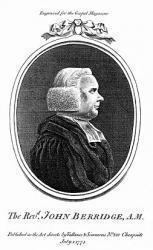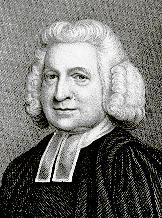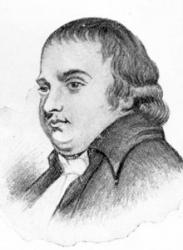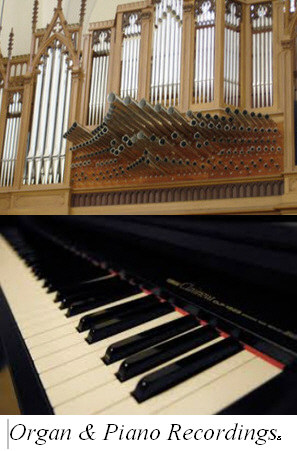Planning worship?
Check out our sister site, ZeteoSearch.org,
for additional resources related to your search.
- |
User Links
Search Results


Lord Jesus, think on me
Author: Synesius Meter: 6.6.8.6 Appears in 134 hymnals Lyrics: Lord Jesus, think on me,
And purge away my sin;
From earth-born passions set me free,
And make me pure within.
2 Lord Jesus, think on me,
With many a care oppressed,
Let me Thy loving servant be,
And taste Thy promised rest.
3 Lord Jesus, think on me
Nor let me go astray;
Through darkness and perplexity
Point Thou the heavenly way.
5 Lord Jesus, think on me,
That, when this life is passed,
I may the eternal brightness see
And share Thy joy at last. Topics: The Church Confession; The Church Confession; Confession of Sin Used With Tune: [Lord Jesus, think on me]
Lord Jesus, think on me

O perfect life of love
Author: Sir Henry W. Baker Appears in 88 hymnals Used With Tune: ABER
O perfect life of love

How swiftly the torrent rolls
Author: Philip Doddridge Appears in 135 hymnals Used With Tune: ABER
How swiftly the torrent rolls

O perfect life of love!
Hymnal: The Scottish Hymnal #44a (1892) Languages: English Tune Title: ABER
O perfect life of love!

O perfect life of love!
Author: Sir H. W. Baker Hymnal: The Song Companion to the Scriptures #46a (1911) Languages: English Tune Title: ABER
O perfect life of love!

O perfect life of love
Author: Sir Henry W. Baker Hymnal: Hymns of the United Church #51 (1916) Languages: English Tune Title: ABER
O perfect life of love
John Berridge

1716 - 1793 Author of "Let Wanton Men Beware" in The Cyber Hymnal Berridge, John, born at Kingston, Notis, March 1, 1716, and educated at Clare Hall, Cambridge. In 1749 he was ordained as curate to the parish of Stapleford, near Cambridge, and in 1755 he was preferred to the Vicarage of Everton, where he died Jan. 22, 1793. His epitaph, written by himself for his own tombstone (with date of death filled in), is an epitome of his life. It reads:—
" Here lies the remains of John Berridge, late Vicar of Everton, and an itinerate servant of Jesus Christ, who loved his Master and His work; and after running on His errands for many years, was caught up to wait on Him above. Reader! art thou born again? (No salvation without a new birth.) I was born in sin, February, 1716; remained ignorant of my fallen state till 1730; lived proudly on faith and works for salvation till 1754; was admitted to Everton Vicarage, 1755; fled to Jesus for refuge, 1755; fell asleep in Jesus, January 22,1793."
The first collection of Berridge's hymns was published as A Collection of Divine Songs, 1760. This was subsequently suppressed. In 1785 his Sion's Songs; or, Hymns composed for the use of them that love and follow the Lord Jesus Christ in Sincerity were published. The work contains 342 hymns, some of which had previously appeared in the Gospel Magazine (from 1775 to 1777, 20 in all), under the signature of "Old Everton" and others were adapted from C. Wesley. The most popular of these in modern collections are, "Jesus, cast a look on me;" "O happy saints who dwell in light;” and "Since Jesus freely did appear." Concerning his hymns published in 1785, he says in his Preface:—
“Twelve years ago these hymns were composed in a six months' illness, and have since laid neglected by me, often threatened with the fire, but have escaped that martyrdom."
-- John Julian, Dictionary of Hymnology (1907)
==================
Berridge, John, p. 138, i. The 1842 edition of his Sion's Songs has an elaborate preface by J. C. Philpot, the editor. From this collection the following additional hymns are in common use:—
1. I ask my dying Saviour dear. Sealed by Christ.
2. Lord Jesus, Who didst once appear. Holy Matrimony. An altered form of "Since Jesus freely did appear," p. 1059, i.
3. Soon as faith the Lord can see. None but Jesus.
--John Julian, Dictionary of Hymnology, Appendix, Part II (1907)
John Berridge
Charles Wesley

1707 - 1788 Author of "And Am I Born To Die?" in The Cyber Hymnal Charles Wesley, M.A. was the great hymn-writer of the Wesley family, perhaps, taking quantity and quality into consideration, the great hymn-writer of all ages. Charles Wesley was the youngest son and 18th child of Samuel and Susanna Wesley, and was born at Epworth Rectory, Dec. 18, 1707. In 1716 he went to Westminster School, being provided with a home and board by his elder brother Samuel, then usher at the school, until 1721, when he was elected King's Scholar, and as such received his board and education free. In 1726 Charles Wesley was elected to a Westminster studentship at Christ Church, Oxford, where he took his degree in 1729, and became a college tutor. In the early part of the same year his religious impressions were much deepened, and he became one of the first band of "Oxford Methodists."
In 1735 he went with his brother John to Georgia, as secretary to General Oglethorpe, having before he set out received Deacon's and Priest's Orders on two successive Sundays. His stay in Georgia was very short; he returned to England in 1736, and in 1737 came under the influence of Count Zinzendorf and the Moravians, especially of that remarkable man who had so large a share in moulding John Wesley's career, Peter Bonier, and also of a Mr. Bray, a brazier in Little Britain. On Whitsunday, 1737, [sic. 1738] he "found rest to his soul," and in 1738 he became curate to his friend, Mr. Stonehouse, Vicar of Islington, but the opposition of the churchwardens was so great that the Vicar consented that he "should preach in his church no more." Henceforth his work was identified with that of his brother John, and he became an indefatigable itinerant and field preacher. On April 8, 1749, he married Miss Sarah Gwynne. His marriage, unlike that of his brother John, was a most happy one; his wife was accustomed to accompany him on his evangelistic journeys, which were as frequent as ever until the year 1756," when he ceased to itinerate, and mainly devoted himself to the care of the Societies in London and Bristol. Bristol was his headquarters until 1771, when he removed with his family to London, and, besides attending to the Societies, devoted himself much, as he had done in his youth, to the spiritual care of prisoners in Newgate. He had long been troubled about the relations of Methodism to the Church of England, and strongly disapproved of his brother John's "ordinations." Wesley-like, he expressed his disapproval in the most outspoken fashion, but, as in the case of Samuel at an earlier period, the differences between the brothers never led to a breach of friendship. He died in London, March 29, 1788, and was buried in Marylebone churchyard. His brother John was deeply grieved because he would not consent to be interred in the burial-ground of the City Road Chapel, where he had prepared a grave for himself, but Charles said, "I have lived, and I die, in the Communion of the Church of England, and I will be buried in the yard of my parish church." Eight clergymen of the Church of England bore his pall. He had a large family, four of whom survived him; three sons, who all became distinguished in the musical world, and one daughter, who inherited some of her father's poetical genius. The widow and orphans were treated with the greatest kindness and generosity by John Wesley.
As a hymn-writer Charles Wesley was unique. He is said to have written no less than 6500 hymns, and though, of course, in so vast a number some are of unequal merit, it is perfectly marvellous how many there are which rise to the highest degree of excellence. His feelings on every occasion of importance, whether private or public, found their best expression in a hymn. His own conversion, his own marriage, the earthquake panic, the rumours of an invasion from France, the defeat of Prince Charles Edward at Culloden, the Gordon riots, every Festival of the Christian Church, every doctrine of the Christian Faith, striking scenes in Scripture history, striking scenes which came within his own view, the deaths of friends as they passed away, one by one, before him, all furnished occasions for the exercise of his divine gift. Nor must we forget his hymns for little children, a branch of sacred poetry in which the mantle of Dr. Watts seems to have fallen upon him. It would be simply impossible within our space to enumerate even those of the hymns which have become really classical. The saying that a really good hymn is as rare an appearance as that of a comet is falsified by the work of Charles Wesley; for hymns, which are really good in every respect, flowed from his pen in quick succession, and death alone stopped the course of the perennial stream.
It has been the common practice, however for a hundred years or more to ascribe all translations from the German to John Wesley, as he only of the two brothers knew that language; and to assign to Charles Wesley all the original hymns except such as are traceable to John Wesley through his Journals and other works.
The list of 482 original hymns by John and Charles Wesley listed in this Dictionary of Hymnology have formed an important part of Methodist hymnody and show the enormous influence of the Wesleys on the English hymnody of the nineteenth century.
-- Excerpts from John Julian, Dictionary of Hymnology (1907)
==================
Charles Wesley, the son of Samuel Wesley, was born at Epworth, Dec. 18, 1707. He was educated at Westminster School and afterwards at Christ Church, Oxford, where he graduated M.A. In 1735, he took Orders and immediately proceeded with his brother John to Georgia, both being employed as missionaries of the S.P.G. He returned to England in 1736. For many years he engaged with his brother in preaching the Gospel. He died March 29, 1788. To Charles Wesley has been justly assigned the appellation of the "Bard of Methodism." His prominence in hymn writing may be judged from the fact that in the "Wesleyan Hymn Book," 623 of the 770 hymns were written by him; and he published more than thirty poetical works, written either by himself alone, or in conjunction with his brother. The number of his separate hymns is at least five thousand.
--Annotations of the Hymnal, Charles Hutchins, M.A., 1872.
Charles Wesley
Joseph Swain

1761 - 1796 Author of "In Expectation Sweet" in The Cyber Hymnal Swain, Joseph, was born at Birmingham in 1761, and after being apprenticed to an engraver, removed to London. After a time he became a decided Christian, and being of an emotional poetic temperament, began to give expression to his new thoughts and feelings in hymns. In 1783 he was baptized by the Rev. Dr. Rippon, and in 1791 became minister of a Baptist congregation in East Street, Walworth. After a short but popular and very useful ministry, he died April 16, 1796 Swain published the following:—
(1) A Collection of Poems on Several Occasions, London, 1781; (2) Redemption, a Poem in five Books, London, 1789; (3) Experimental Essays on Divine Subjects, London, 1791; (4) Walworth Hymns, by J. Swain, Pastor of the Baptist Church Meeting there, London, 1792, 129 hymns; with a Supplement, 1794, 192 hymns; (5) A Pocket Companion and Directory, London, 1794.
In addition to a limited number of Swain's hymns, annotated under their respective first lines, the following, from his Walworth Hymns1792, and the 2nd ed., 1796, are also in common use:—
1. Brethren, while we sojourn here. Mutual Encouragement.
2. Children of the King of grace. Holy Baptism.
3. Christ the Lord will come again. Second Advent.
4. Come, ye souls, by sin afflicted. The Yoke of Christ.
5. How sweet, how heavenly is the sight. Communion of Saints.
6. In expectation sweet. Second Advent.
7. Lift up your heads, ye gates. Ascension.
8. Love is the sweetest bud that blows. A Flower an Emblem of Christ.
9. 0 how the thought that I shall know. Heaven Anticipated. Sometimes it begins with st. ii., "For ever to behold Him shine".
10. On earth the song begins. Heaven Anticipated.
11. On the wings of faith upspringing. Passiontide.
12. Pilgrims we are to Canaan bound. Pilgrimage of Life.
13. Praise ye the Lord, the eternal King. Divinity of Christ.
14. Praise your Redeemer, praise His Name. Praise for Redemption.
15. 'Tis heaven begun below. Heaven Anticipated.
16. What is it for a saint to die? Death and Burial.
17. What must [will] it be to dwell above? Heaven Anticipated.
18. When firm I [we] stand on Zion's hill. Confidence. Sometimes as "I stand on Zion's mount," in American collections.
19. Who can forbear to sing? Praise of Jesus.
From his Redemption, a Poem in Five Books, 1791, the following hymns are also in common use:--
20. 0 Thou in whose presence my soul takes delight. In Affliction.
21. Ye daughters of Zion, declare, have you see? Comfort in Affliction.
Of these hymns the most widely known are Nos. 1, 5, 6, and 20. We may add that several of Swain's hymns appeared in The Theological Miscellany, 1784-1789. [Rev. W. R. Stevenson, M.A.]
-- John Julian, Dictionary of Hymnology (1907)
Joseph Swain
Christian Classics Ethereal Hymnary
Publication Date: 2007 Publisher: Grand Rapids, MI: Christian Classics Ethereal Library
Christian Classics Ethereal Hymnary
Small Church Music

Editors: James Burns Description:
History
The SmallChurchMusic site was launched in 2006, growing out of the requests from those struggling
to provide suitable music for their services and meetings. Rev. Clyde McLennan was ordained in mid
1960’s and was a pastor in many small Australian country areas, and therefore was acutely aware of
this music problem. Having also been trained as a Pipe Organist, recordings on site (which are a subset
of the smallchurchmusic.com site) are all actually played by Clyde, and also include piano and piano
with organ versions.
About the Recordings All recordings are in MP3 format.
Churches all around the world use the recordings, with downloads averaging over 60,000 per
month.
The recordings normally have an introduction, several verses and a slowdown on the last verse.
Users are encouraged to use software: Audacity (http://www.audacityteam.org) or Song Surgeon (http://songsurgeon.com) to adjust the MP3 number of verses, tempo and pitch to suit their local needs.
Mobile App
We have partnered with the developer of the popular NetTracks mobile app to offer the Small Church Music collection as a convenient mobile app. Experience the beloved Small Church Music collection through this iOS app featuring nearly 10,000 high-quality hymn recordings that can be organized into custom setlists and downloaded for offline use—ideal for worship services without musicians, congregational practice, and personal devotion. The app requires a small fee to cover maintenance costs. Please note: While Hymnary.org hosts this music collection, technical support for the app is provided exclusively by the app developer, not by Hymnary.org staff.
LicensingCopyright notice: Rev. Clyde McLennan, performer in this collection, has assigned his performer rights in this collection to Hymnary.org. Non-commercial use of these recordings is permitted. For permission to use them for any other purposes, please contact manager@hymnary.org.
Home/Music(smallchurchmusic.com)
List SongsAlphabetically
List Songsby Meter
List Songs byTune Name
About
Small Church Music


 My Starred Hymns
My Starred Hymns

